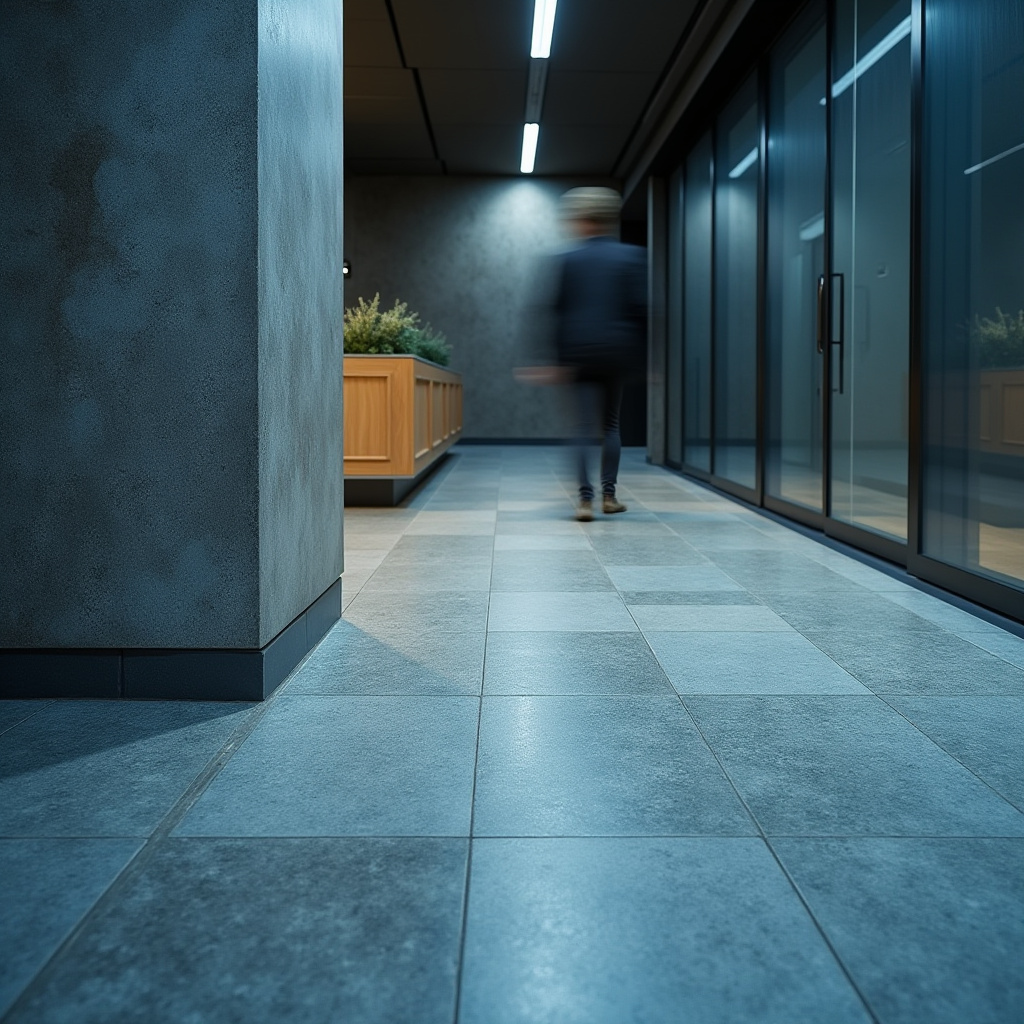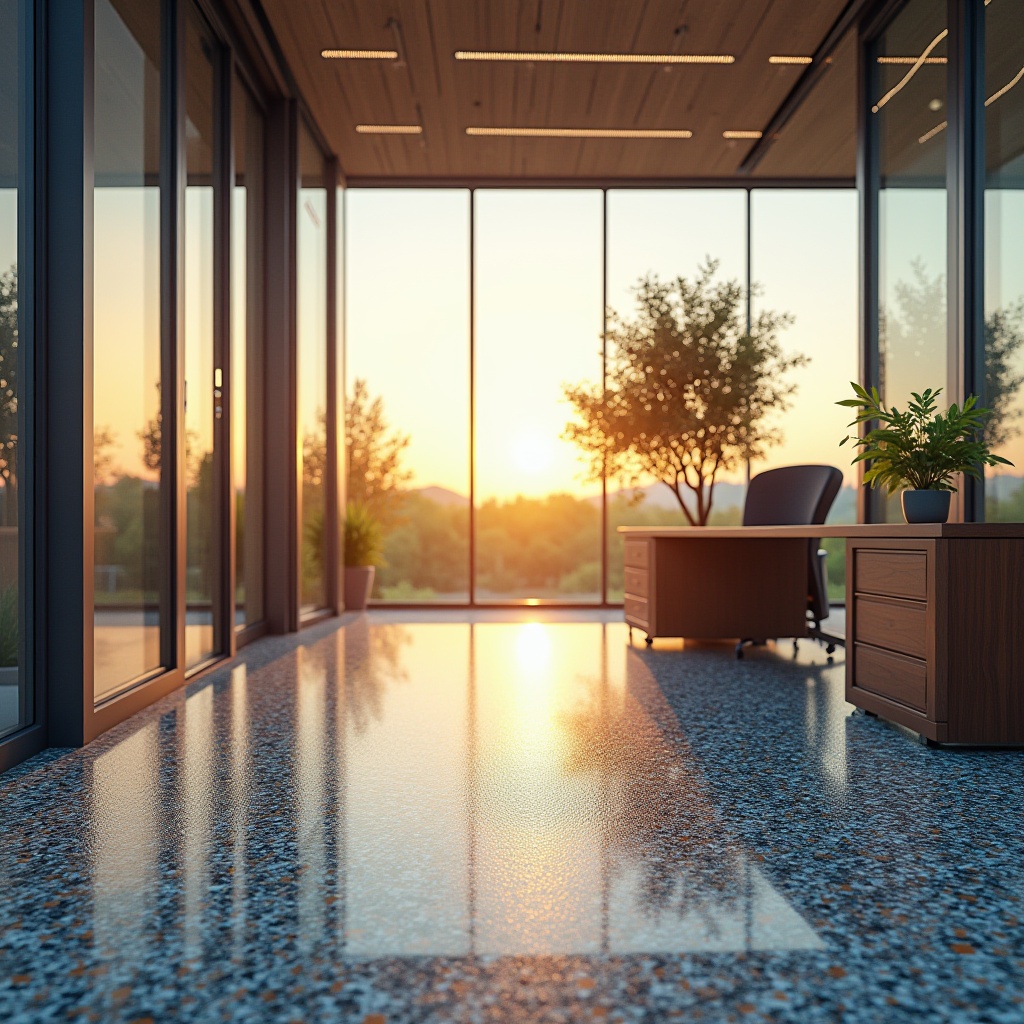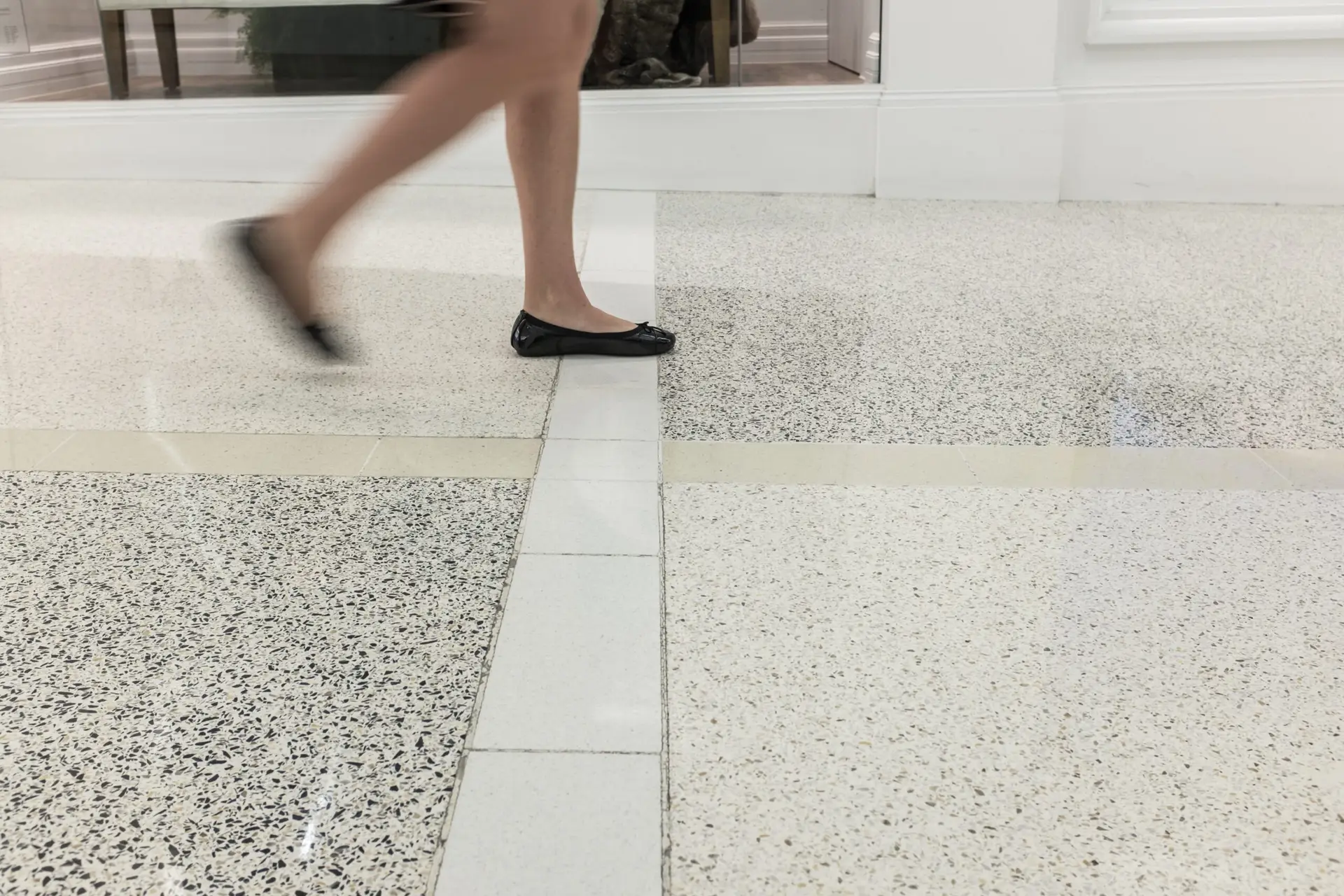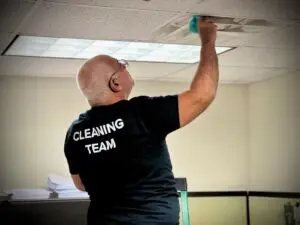Building on the ancient heritage of Venetian craftsmanship, builders created terrazzo as a durable composite material from unused pieces of marble. The enduring appeal of terrazzo flooring exists because it offers multiple design possibilities and extended life while blending with modern architectural styles. The durability of commercial flooring continues to be met primarily by terrazzo, which provides a high level of elegance along with structural strength.
Fundamental Terrazzo Composition
Terrazzo begins with marble, quartz, granite, glass or other aggregates applied to a binder matrix. The two primary binders – can be either cement, epoxy or both.
The performance defines the characteristics of the material as it works properly on different high traffic scenarios. The manufacturing steps require complex operations that combine thorough mixing of materials with casting and curing, followed by grinding and polishing to produce strong surfaces with beautiful appearance.
Surface Type Breakdown
Cement-Based Terrazzo
The traditional cement-based terrazzo material combines durability with classic appearance characteristics. The material supports large aggregate dimensions and allows direct application onto concrete subfloors to achieve a single continuous effect.
Under heavy foot traffic cement-based terrazzo demonstrates high compressive strength which ensures its performance integrity. The material tends to develop cracks more frequently than epoxy terrazzo systems throughout its lifespan. The material needs moisture control since it is porous so proper sealing becomes essential.
The application of this type works best for historical renovation projects as well as expansive commercial spaces and exterior areas that require long-lasting durability over specialized design flexibility.

Epoxy Terrazzo
Modern epoxy terrazzo stands out because it provides excellent durability alongside chemical resistance and moisture-blocking properties. The material weighs less than cement terrazzo and remains thinner which enables quicker installation while requiring less support from building structures.
The absence of cement enables greater design freedom because it enables wider color capabilities and intricate inlays and improved aggregate-to-binder proportions which boost surface quality and appearance.
The epoxy terrazzo material finds its main application in commercial and outdoor areas through the application of UV-resistant protective coatings which protect against color fading and structural breakdown.

Comparative Analysis
Cement-based terrazzo performs exceptionally well in external environments because it naturally tolerates temperature variations. The material offers designers the advantage of authentic old-world aesthetics which they prefer to use.
The main advantages of epoxy terrazzo over cement terrazzo include simple maintenance requirements along with superior color dimension and extended product lifespan. Epoxy terrazzo surfaces demonstrate two key advantages because they are non-porous and resist stains and maintain hygienic conditions.
Epoxy terrazzo works best in controlled interior spaces but cement-based terrazzo becomes the exterior preference because of its better thermal expansion capabilities.
Commercial Floor Maintenance
The cleaning procedures involve daily dust mopping followed by occasional use of pH-neutral cleaners for wet mopping and periodic polishing to preserve its shine.
The protection of cement-based terrazzo requires sealings to prevent moisture intrusion while epoxy surfaces need protective coatings which improve their resistance to scratches and stains.
Proper maintenance of terrazzo floors enables their longevity to exceed several decades thus making it an economical flooring solution for commercial buildings.
Extend Your Floor’s Lifespan Up to Decades. Click Here
Outdoor Space Applications
The weather-resistance of cement-based terrazzo is exceptional yet epoxy terrazzo needs protective layers for outdoors.
Outdoor terrazzo applications need to consider three weather elements:
- UV exposure
- Freeze-thaw cycles
- Moisture infiltration
Proper drainage systems combined with sealants protect the material from damage.
The development of new surface treatment methods together with improved resin composition now makes terrazzo perform better in external surfaces. New technical advancements strengthen terrazzo for outdoor use which allows its application to patios as well as walkways and high-traffic commercial spaces.
Resilient resin materials combined with modern surface enhancement procedures enable scientists to develop exterior terrazzo structures with enhanced durability to surpass traditional interior uses for flooring.
Installation Considerations
The success of both types of terrazzo depends on a stable substrate that is properly prepared. Installation requires moisture barriers, levelling compounds and reinforcing materials.
Trained professionals use professional installation methods to distribute aggregates and perform grinding and polishing, resulting in a mirror-like finish.
The installation process includes thorough quality assessments that check for strong bonds and measure hardness and surface uniformity to ensure durability over time.
Future Trends
Modern technique integration with sustainable elements such as used materials and environmentally friendly cement elements and finishing methods helps terrazzo projects meet green building demands.
Emerging Technologies provide two-fold benefits through self-healing materials and nanotechnology coatings and antimicrobial terrazzo surfaces which lead to performance enhancement.
Customization in design will progress through digital fabrication that enables complex and large terrazzo art displays suitable for commercial establishments.









